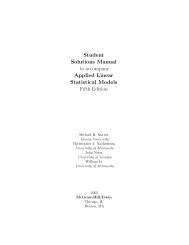Journal of Film Preservation - FIAF
Journal of Film Preservation - FIAF
Journal of Film Preservation - FIAF
Create successful ePaper yourself
Turn your PDF publications into a flip-book with our unique Google optimized e-Paper software.
pero el comentario atribuye mayor<br />
importancia al material de archivo en<br />
sí. Además, von Bagh no se conforma<br />
con utilizar material de archivo, sino<br />
que retoma secuencias de películas de<br />
ficción rodadas en Helsinki y cuadros<br />
(algunos de los cuales son anteriores<br />
a la invención del cine) que agregan<br />
un elemento de color del que por<br />
supuesto carecen los documentos en<br />
blanco y negro. Como en el caso de<br />
Davies, el comentario se construye con<br />
numerosos préstamos y música tomada<br />
de las películas de ficción citadas, pero<br />
las reflexiones de von Bagh sobre el<br />
material de archivo y la ficción son el<br />
elemento más original del comentario,<br />
en especial, las relaciones entre el<br />
presente y el pasado.<br />
Por supuesto, la película de Peter von<br />
Bagh es una película sobre Helsinki,<br />
pero es a la vez una película sobre<br />
la magia de las viejas imágenes. Y la<br />
asombrosa secuencia inicial, con un<br />
carguero que rompe el hielo del puerto<br />
de Helsinki en medio de mirones<br />
que están sobre el hielo, es ya una<br />
demostración de ello, al igual que la<br />
magnífica secuencia final, con la vuelta<br />
de las tropas, que le permite a von<br />
Bagh concluir sus reflexiones con las<br />
palabras: «La historia nos mira.»<br />
El último «city film» reseñado es muy<br />
distinto. The London Nobody Knows<br />
(Norman Cohen, Reino Unido 1967)<br />
se inspira en un libro de Ge<strong>of</strong>frey<br />
Fletcher que propone una visita a los<br />
lugares de Londres desaparecidos y<br />
olvidados en general por todos, salvo<br />
por sus habitantes. En este caso, se<br />
trata de filmar lugares que están por<br />
desaparecer, como un teatro del barrio<br />
de Bedford, que fue derribado dos<br />
años después del rodaje de la película.<br />
Otro elemento especial es el recurso<br />
a un «guía»: James Mason, con gorra<br />
de visera y traje de tweed, nos pasea<br />
de manera muy convincente por los<br />
lugares. Por último, el comentario, a<br />
veces irónico, insiste en el hecho de<br />
que este Londres, en parte devastado,<br />
sigue teniendo una verdadera vida de<br />
barrio.<br />
PD. Como indica el autor en sus<br />
párrafos finales, la visión (y la<br />
proyección en pantalla grande)<br />
de estas películas, todas ellas de<br />
calidad excepcional, plantea muchas<br />
cuestiones relacionadas con el uso de<br />
los archivos en esta época de lo digital.<br />
Lo cual no es el menor de sus méritos.<br />
Cohen with a most attractive quirkiness and style. There is a host, and a<br />
surprising one – James Mason in flat cap, tweed jacket, pullover, and furled<br />
brolly. But he does not come across as a movie star slumming in a lowbudget<br />
documentary. He seems genuinely interested, perhaps because<br />
he had a degree in architecture from Cambridge. The narration is by turns<br />
ironic, humane, sardonic. This London may be run-down, but still brims<br />
with street life. One startling aspect <strong>of</strong> the film now is the intensity with<br />
which it shows the poor, the homeless, the alcoholic – portraits held long<br />
enough to feel the pain. One sequence has Mason in a Salvation Army<br />
hostel interviewing residents, men “down-on-their-luck”. It is awkward,<br />
this meeting between a Hollywood movie star and the three poor yet<br />
unashamed men. But it feels real. And that side <strong>of</strong> our old cities is still with<br />
us. As with the other three films, music plays an important role – in this case,<br />
old music hall songs.<br />
The overall feeling <strong>of</strong> The London Nobody Knows is encapsulated in the film’s<br />
last lines, with Mason standing in front <strong>of</strong> a building being attacked by a<br />
wrecking ball:<br />
“There is no need to be too sad about it because, after all, most<br />
<strong>of</strong> Victorian London was fairly hideous. And we can also console<br />
ourselves with the knowledge that the same fate attends our least<br />
favourite modern monstrosities.”<br />
There are no DVD extras with The London Nobody Knows. It is packaged with<br />
another film from that period, a short 1968 romantic comedy, Les Bicyclettes<br />
de Belsize. Since there are no extras, I explored the Internet and discovered a<br />
lot <strong>of</strong> references to The London Nobody Knows. It gained a minor cult status<br />
during its years <strong>of</strong> being hard-to-find. There are sites which, for example,<br />
debate the identities <strong>of</strong> characters who appear unidentified in the film.<br />
Despite the Internet discussion, I think it would have been enlightening if<br />
the distributors had included some background in the actual DVD package.<br />
As has been discussed elsewhere in these pages and in several issues <strong>of</strong> this<br />
journal, the digital revolution is affecting both the archival and screening<br />
worlds. I have seen La Mémoire des anges in the theatre in HD, and it looks<br />
and sounds splendid. I first saw Of Time and the City in Montréal at a film<br />
festival. The screening was horrendous, the sound continually breaking<br />
up. I saw it a second time some months later on release in Montréal. This<br />
time the sound was fine, but the picture was unsatisfactory. I am not going<br />
to blame the producers. Complaints about cinema digital projection are<br />
widespread. Some cinemas even project DVDs. However, I did find on the<br />
Internet a note from Michael Brooke <strong>of</strong> the BFI, where he quotes a comment<br />
made by the technical supervisor <strong>of</strong> the digital Of Time and the City:<br />
“Of Time and the City was produced through the Digital Departures<br />
Initiative by Hurricane <strong>Film</strong>s in association with Northwest Vision<br />
and Media, Liverpool 08, BBC <strong>Film</strong>s and UK <strong>Film</strong> Council. For reasons<br />
<strong>of</strong> a micro-budget and the basic fact that the film relied so heavily<br />
on footage from regional archives (only available in SD), the film was<br />
produced PAL standard definition and delivered on Digibeta.”<br />
Which brings us to a quandary faced by all <strong>of</strong> us who work with archives,<br />
the necessity <strong>of</strong> getting the best possible quality sources, always with the<br />
supposition that our films may make it to the big screen; and then to the<br />
very real question about the digital projection facilities in theatres. As an<br />
62 <strong>Journal</strong> <strong>of</strong> <strong>Film</strong> <strong>Preservation</strong> / 81 / 2009
















